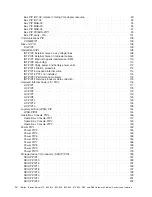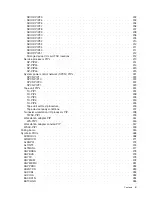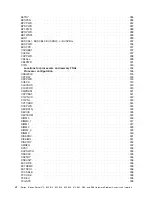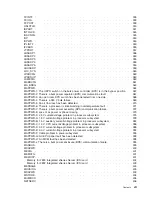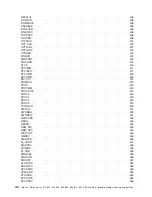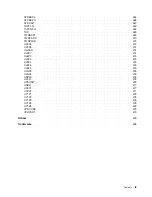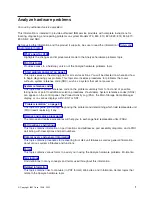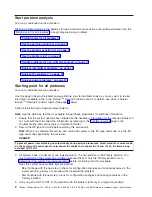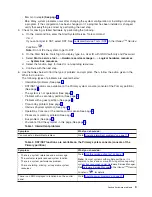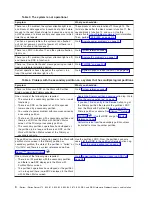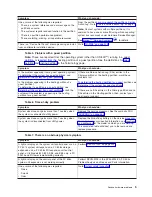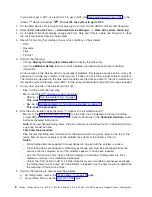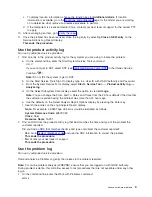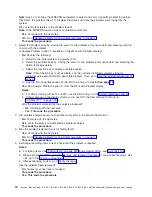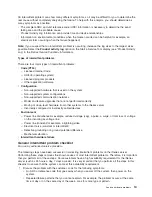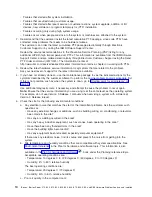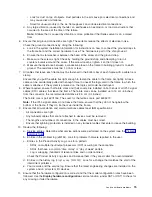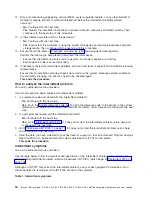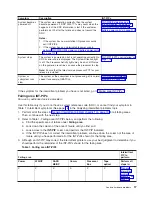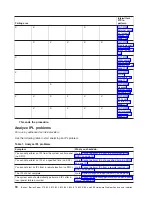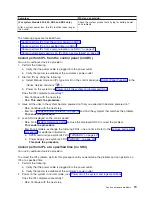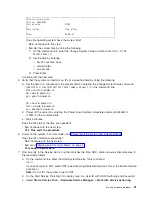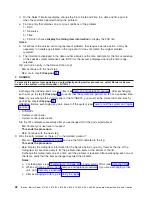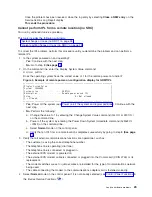
If
you
cannot
get
to
SST,
use
function
21
to
get
to
DST.
See
in
the
iSeries
(TM)
Service
Functions
.
Do
not
IPL
the
system
to
get
to
DST.
2.
On
the
Start
Service
Tools
Sign
On
display,
type
in
a
User
ID
with
QSRV
authority
and
Password.
3.
Select
Start
a
Service
Tool
—>
Hardware
Service
Manager
—>
Work
with
service
action
log
.
4.
On
the
Select
Timeframe
display,
change
the
From:
Date
and
Time
to
a
date
and
time
prior
to
when
the
customer
reported
having
the
problem.
5.
Search
for
an
entry
that
matches
one
or
more
conditions
of
the
problem:
v
SRC
v
Resource
v
Time
v
FRU
list
6.
Perform
the
following:
v
Choose
Display
the
failing
item
information
to
display
the
SAL
entry.
v
Use
the
Additional
Details
function
to
switch
between
part
descriptions
and
part
locations
information.
All
new
entries
in
the
Service
Action
Log
represent
problems
that
require
a
service
action.
It
may
be
necessary
to
handle
any
problem
in
the
log
even
if
it
does
not
match
the
original
problem
symptom.
The
information
displayed
in
the
date
and
time
fields
are
the
date
and
time
for
the
first
occurrence
of
the
specific
system
reference
code
(SRC)
for
the
resource
displayed
during
the
time
range
selected.
7.
Did
you
find
an
entry
in
the
Service
Action
Log?
v
Yes
:
Continue
with
the
next
step.
v
No
:
Is
the
OS/400
(R)
operating
system
available?
–
Yes
:
Go
to
This
ends
the
procedure.
–
No
:
Go
to
This
ends
the
procedure
.
8.
Was
the
entry
isolated
(does
the
letter
″
Y
″
appear
in
the
Isolated
column)?
v
No
:
Go
to
the
Use
the
SRC
that
is
indicated
in
the
log
to
find
the
correct
SRC
table
and
unit
reference
code.
Perform
all
actions
in
the
Description/Action
column
before
exchanging
failing
items.
Note:
When
exchanging
failing
items,
the
part
numbers
and
locations
found
in
the
Service
Action
Log
entry
should
be
used.
This
ends
the
procedure
.
v
Yes
:
Display
the
failing
item
information
for
the
Service
Action
Log
entry.
Items
at
the
top
of
the
failing
item
list
are
more
likely
to
fix
the
problem
than
items
at
the
bottom
of
the
list.
Notes:
–
Some
failing
items
are
required
to
be
exchanged
in
groups
until
the
problem
is
solved.
–
Other
failing
items
are
flagged
as
mandatory
exchange
and
must
be
exchanged
before
the
service
action
is
complete,
even
if
the
problem
appears
to
have
been
repaired.
–
Use
the
″
Part
Action
Code
″
field
in
the
SAL
display
to
determine
if
failing
items
are
to
be
replaced
in
groups
or
as
mandatory
exchanges.
–
Unless
the
″
Part
Action
Code
″
of
a
FRUs
indicates
group
or
mandatory
exchange,
exchange
the
failing
items
one
at
a
time
until
the
problem
is
repaired.
Use
the
help
function
to
determine
the
meaning
of
Part
Action
Codes.
9.
Perform
the
following
to
help
resolve
the
problem:
a.
For
failing
items,
refer
to
the
page.
b.
For
symbolic
FRUs,
see
the
page.
8
iSeries:
iSeries
Server
270,
800,
810,
820,
825,
830,
840,
870,
890,
SB2,
and
SB3
Hardware
Problem
Analysis
and
Isolation

